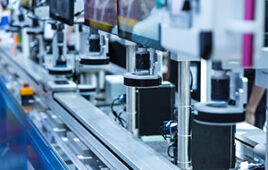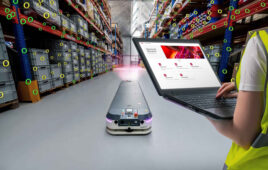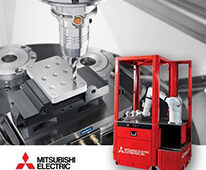One thing that’s certain about regulations: they’re bound to change.
Europe is making significant alterations to one of the primary ruling
documents for production equipment, adding requirement that should
improve safety while putting more focus on risk assessment.
The European Union’s Machinery Directive (2006/42/EC)
goes into effect Dec. 29, replacing the longstanding Machinery
Directive (98/37/EC). “This is a major rewrite, the last one that was
this broad was more than 10 years ago,” says Udo Heinz, Division
Manager Industrial Machinery for TUV Rheinland of North America Inc., based in Carlsbad, Calif.

He
predicts that many suppliers will be caught unprepared when the
regulators begin enforcing the new rules that let them impound
equipment that doesn’t meet requirements. “Come January, I’m sure there
will be a lot of frantic calls when people find out their products are
hung up at customs or at a plant where they’re being blocked from
starting up,” Heinz says.
That likelihood will be increased because the new regulations call
for each signing country to beef up its enforcement for compliance. The
enforcement staffs will be looking for documentation, making sure it
meets the new requirements. As with many regulations, the paperwork
will take some getting used to. The new Directive requires serial
numbers on each Declaration of Compliance. That’s not as onerous as it
sounds. Companies can use a range of numbers so they don’t have to
change them for each unit in a shipment.
This documentation will of course be associated with a number
of new technical requirements. One of the biggest changes comes in
safety, where equipment makers must account for foreseeable misuse.
“It’s no longer good enough to say ‘don’t do this.’ If people are going
to do something, you need to look at it and design to prevent them from
doing it,” Heinz says.
He cites a cleaning scenario in which a cleaning staff comes in
to wash down a machine, taping its safety interlock switches so that
doors remain open and the machine could run in an unsafe state with the
safety features defeated. That tape often stays in place when equipment
is run to dry it, creating a safety hazard and also presents a hazard
to the staff cleaning and the equipment.
“Under the new regulations, you’ve got to do something like
locate the safety switch somewhere where people can’t tape over it,”
Heinz says.
Another technical change is that when panels are attached to
protect operators, they must be held on using captive screws, ensuring
that they won’t be lost when the shield is removed. This could reduce
the number of times that protective structures aren’t replaced, which
should reduce injuries. Though altering the screw mounts isn’t a huge
challenge, the repercussions can be sizeable.
“If you know about these small things, you can do something
about them. But it gets blown out of proportion if an official says the
machine can’t be turned on when the customer is hoping to ramp up
production. Something that costs a couple dollars and a few minutes of
design time could cost 100 times as much if you have to retrofit a
machine in the field,” Heinz says.
European regulators have also strengthened their focus on risk
assessment. This analysis has played a growing role in a number of
other European standards in recent years. For example, risk assessment
is a mainstay in both the ISO 13849 and IEC 62061 standards that recently took effect in European Union countries.
Machinery Directive (2006/42/EC) also requires that risk
assessment and safety design be integrated into product design instead
of being bolted on when the equipment is nearing its move from design
into production. Incorporating safety from the beginning should reduce
injuries and make it more difficult for personnel to cut corners in
dangerous ways. “There are significant benefits if you do the
assessment in the front part of design so that the safety solution is
logically integrated into the machine,” Heinz says.
Like many new regulations, the directive has some areas that
leave room for interpretation. Heinz says one of these is a section
that requires that operators be able to see any area that holds the
potential for compromised safety. That may become difficult in large
work areas like a robotic cell.
“If the operator can’t see the back side of a robot cell,
designers need to reposition the operator or put controls on something
like a pendant so the operator can move around,” Heinz says. “The
pendant is a good idea, but not if there’s a chance the operator can
walk into the robot’s arm movement area.”
Though many equipment developers feel that new directives only
apply to new designs, Heinz notes that these regulations apply to any
equipment that’s sold in Europe. “You need to update your certification
even if you haven’t changed anything in a product that’s been shipping
for a while,” Heinz says.
Machinery Directive (2006/42/EC) represents a major change in
European safety standards, so it will cast a long shadow across the
equipment landscape. Design engineers will need to consider its impact
in both old and new designs, or they’re likely to spend a lot more time
considering fixes after the equipment has shipped.
For more information regarding safety and the EU Machinery
Directive, please email Tim Parmer, safety product consultant, Siemens
Industry, at [email protected].
::Design World::
Filed Under: Factory automation, INDUSTRIAL SAFETY SYSTEMS, MECHANICAL POWER TRANSMISSION





Tell Us What You Think!